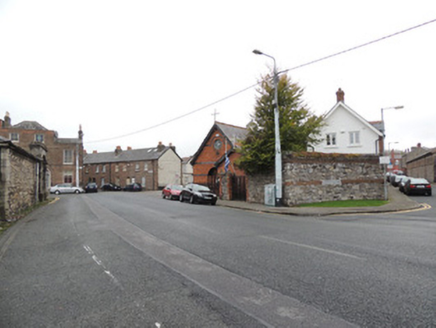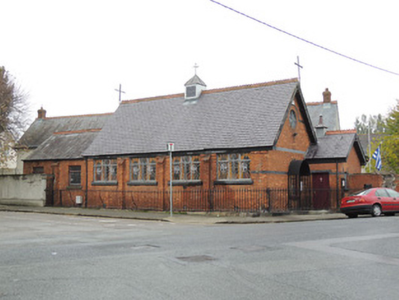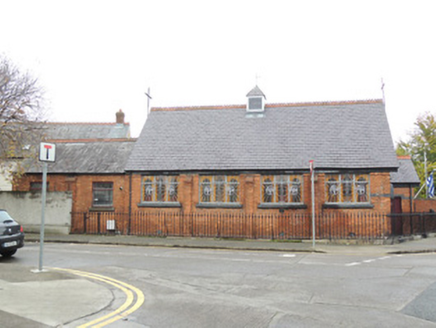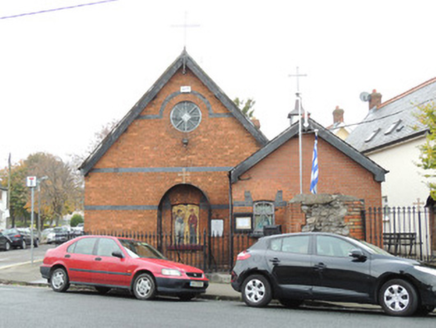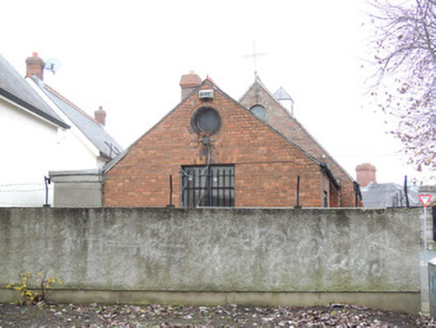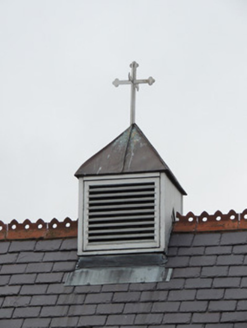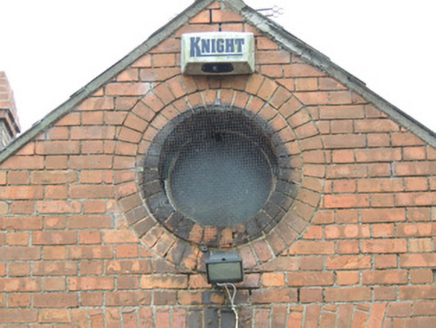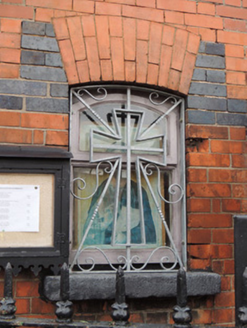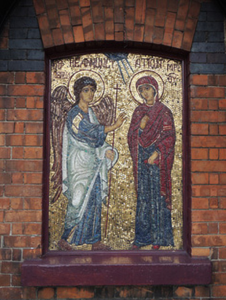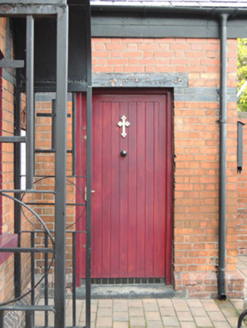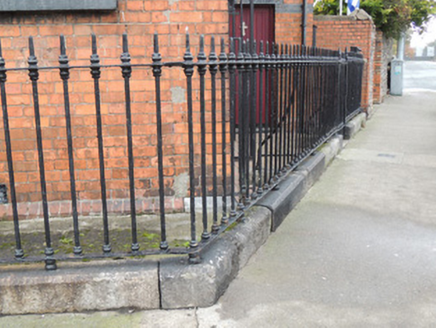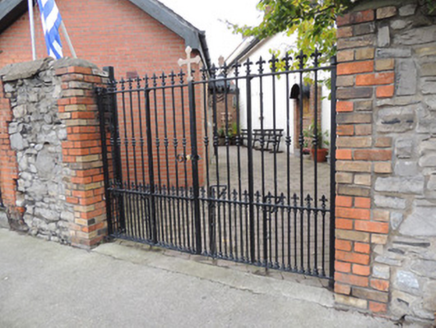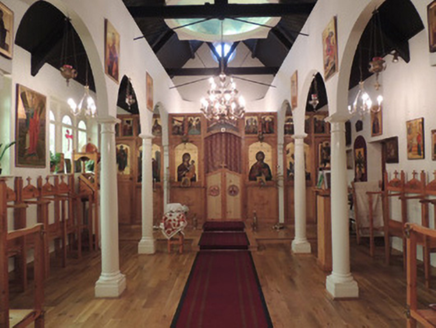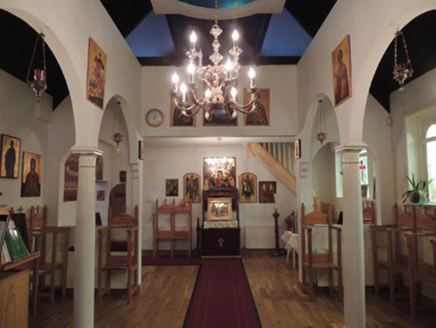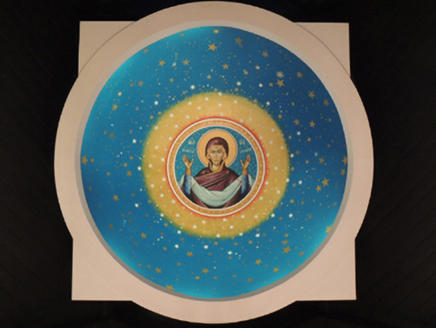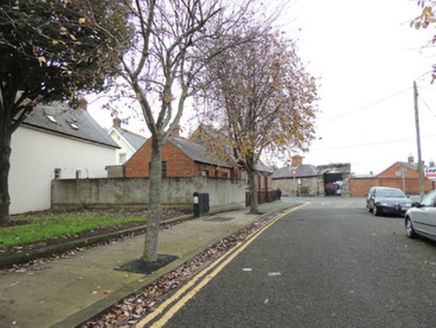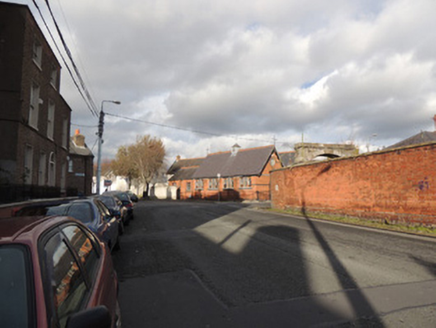Survey Data
Reg No
50070112
Rating
Regional
Categories of Special Interest
Architectural, Artistic, Social
Previous Name
Victoria Kindergarten National School
Original Use
School
In Use As
Church/chapel
Date
1885 - 1895
Coordinates
313939, 234614
Date Recorded
04/11/2012
Date Updated
--/--/--
Description
Detached four-bay single-storey former national school, built 1890, with lower two-bay single-storey addition to north gable, and gabled entrance porch to south-east corner. Now in use as Greek Orthodox Church. Pitched slate roof with terracotta ridge crestings and central square-profile vent tower, cross finials to tower and gables. Red brick walls laid in Flemish bond with eaves course, plinth course and grey brick stringcourses. Square-headed window openings to west elevation, having recent tripartite windows and replacement concrete sills. Oculus window to north and south gables with brick voussoirs. Elliptical headed window openings to south elevation of extension, containing replacement timber casement windows. Elliptical-headed window opening to south elevation filled with recent mosaic depicting the Annunciation. Square-headed door opening to west elevation of porch, containing replacement timber battened door, granite threshold. Cast-iron railings on chamfered granite plinth wall to boundary to south and west. Located within own grounds at street junction.
Appraisal
This former national school is located prominently at the west corner of Arbour Hill, immediately west of the former Arbour Hill detention barracks and north-west of the former Royal Barracks (now Collins Barracks). The former national school may have been built by the military, as it appears on the 1909 military map of the Arbour Hill complex, though its red brick elevations differ in style to the military buildings to the east. The building is identified as ‘Victoria Kindergarten National School’ on the 1909 military map, dedicated to Queen Victoria (1819-1901). Following Independence in 1922, the school kept its name until it became ‘Arbour Hill and Avona Amateur Boxing and Physical Culture Club’ c.1945. The building was adapted as a sewing factory c.1950, and continued this use until it was consecrated as a Greek Orthodox Church in 1994. Originally the school had two rooms, one principal schoolroom with a gallery, and a smaller classroom. The current function of a Greek Orthodox church is complemented by the layout and elegantly proportioned style of this late nineteenth-century building.
